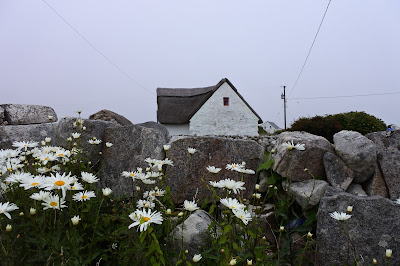 |
| I'll meet you at the Campanile! |
Dorm life. I thought I was done with that forever, But this summer's residency for Cedar Crest College's MFA Program in Creative Writing included a two-week stay in Trinity College's dorms. I dreaded it. We were told that we'd each have a single room but share the bathroom and common space with two other people. I'm too old for this.
 |
| Number 2: My Dorm |
It was fine. My suite-mates and I got along fine and hardly saw each other on our floor unless we wanted to. We were very busy with seminars, workshops, excursions, and eating. And, I got to know them better. Yeah, my room was small (and there was no TV) but really all I needed was a bed, a desk, and a place to keep my stuff. The window had drapes and shutters built-in to the inside wall to shut out the noise (mostly traffic and street music) of busy Dublin.
 |
| My room on the FOURTH floor (no elevator) |
Living on Trinity's campus was actually cool. There was a wall around us with limited open gates which didn't stop the tourists during the day, but at night if we went out to explore the town we had to remember which gate would be open so that we could get back to our dorms.
 |
| The Main Gate, from the outside |
We got the hang of it within a few days. I took a walk around campus one morning before our seminar to see what the rest of campus looks like: grassy squares, lots of ivy, and both old and new buildings. The train is elevated over the other end of campus. And then there's the
Book of Kells! That medieval manuscript is housed in the Old Library which also contains the Long Room, a centuries-old library reading room with an arched ceiling. The Old Library and the Book of Kells were my neighbors.
 |
| The Long Room in Trinity's Old Library |
We ate dinner on our own eat evening, and got to explore the many pubs around Dublin: Merchant's Arch, O'Neill's, Porterhouse, and Brazen Head were some of our favorites. Most pubs were either adorned with flowers like O'Neill's and Brazen Head,
or painted in crazy bright colors.
Ya know what's big in Dublin? Hurling is big. This is a fast-paced game which seemed to my American friends to be four or five games played simultaneously. There's a small white ball that is batted around with a wooden stick which has something like a spoon at the end. The goals are a combination of soccer and football goalposts and there seems to be more than one way to score. We watched a game between Kilkenny and Galway at Croke Park, a rather nice stadium that our airport taxi driver was excited to tell us about. We never did figure out all of the details of the game, but it was fun to be there to watch the proceedings on the field and the jazzed-up fans wearing their favorite team's colors. We were told before the game that Kilkenny always wins, and although Galway seemed to be leading for some of the game, Kilkenny got the win.
Dublin is James Joyce's city. We were required to read part of
Dubliners before our residency, but it's really
Ulysses that the real Dubliners talk about. We visited the Joyce Tower as a group--this is now a museum dedicated to Joyce and focusing on
Ulysses.
 |
| The Joyce Tower, now a museum |
It's a Martello Tower, a kind of tower built as a defense against Napoleon who was rumored to be planning an attack on Dublin. We climbed the very narrow (narrower than the typical American lighthouse) spiral steps to the top to enjoy the spectacular view.
 |
| From the top of the Joyce Tower--is that Howth over there? |
Scenes from that epic novel are based on rooms in the tower.
Some scenes are set in Kennedy's pub and Sweny's Pharmacy, both near Trinity College. The protagonist Leopold Bloom bought lemon soap for his wife at Sweny's. (I bought some of that lemon soap for a friend at work who is a big fan. She loved it!) Sweny's is known as the "worst pharmacy in Dublin" mostly because it exists now to sell the lemon soap and used books, and to host readings of James Joyce literature in many languages.
 |
| Inside Sweny's Pharmacy |
The Joyce Tower, in Sandycove, forms the southern border of Dublin Bay, and at the northern shore of the bay we found Howth, a suburb of Dublin. This delightful seaside city made me feel at home and gave my camera a workout. Check out these shots (it was hard to take a bad picture there!):
 |
| Howth Head |
 |
| It was windy that day--that's not my hairdo. |
 |
| Howth |








































